Exploring Values in Drawing and Painting
Welcome to the fascinating world of values in visual arts! If you’ve ever stared at a painting or a drawing and felt a rush of emotions, you’ve experienced the power of value without even realizing it. Values are not just about light and dark; they are the backbone of composition, setting the mood, and creating depth in artwork. Think of values as the musical notes in a symphony; each note contributes to the overall harmony, and without them, the piece would fall flat. So, let’s dive deeper into how values can transform your artistic creations!
Understanding value is crucial for artists because it defines the lightness or darkness of colors. This simple yet profound concept can dramatically impact the mood and perception of your artwork. Imagine walking into a room filled with bright, vibrant colors; it instantly lifts your spirits, right? Now, picture the same room painted in dark hues—suddenly, it feels somber and heavy. That’s the power of value! It shapes how viewers connect with your work and can evoke a range of emotions from joy to melancholy.
Values can be categorized into various types, each playing a vital role in creating depth and dimension in your art. Understanding these categories can help you manipulate light and shadow effectively. Here are the three main types:
- Local Value: The inherent lightness or darkness of an object.
- Perceptual Value: How we perceive an object’s color and brightness under different lighting conditions.
- Tonal Value: The range of values in a piece, from the darkest dark to the lightest light.
Local value refers to the inherent lightness or darkness of an object, independent of lighting conditions. This concept allows artists to establish a baseline for their compositions. For instance, a ripe banana has a specific local value that remains consistent regardless of whether it’s in bright sunlight or dim light. By recognizing and utilizing local value, artists can create a more realistic representation of their subjects.
Defining local value involves analyzing the object's color and texture. This analysis helps artists create realistic representations in their drawings and paintings. Think of it as a painter's guidebook; by understanding the local value of objects, you can make informed decisions about color choices and shading techniques. Imagine painting a still life of a red apple. By knowing its local value, you can accurately depict how it appears under various lighting conditions, enhancing its three-dimensionality.
Examples of local value can be found in still life studies where artists depict objects under consistent lighting to emphasize their true colors. For instance, when painting a bowl of fruit, an artist might choose to keep the lighting uniform to showcase the natural colors and values of each piece. This technique not only highlights the objects themselves but also creates a sense of harmony and balance within the composition.
Perceptual value relates to how we perceive an object's color and brightness under varying lighting conditions. This type of value is crucial as it influences the overall atmosphere of a piece. For example, think about how a sunset can transform the colors of a landscape. The same trees that appear green during the day may take on shades of orange and purple at dusk. Understanding perceptual value allows artists to manipulate light to create mood and emotion in their work.
Contrast is essential in art as it highlights differences in value, drawing attention to focal points and enhancing the visual interest of the artwork. Imagine a bright, sunny day where shadows create stark contrasts on the ground; this interplay of light and dark can guide the viewer’s eye and create a sense of movement within the piece. By skillfully using contrast, artists can make their work more dynamic and engaging.
High contrast techniques involve using stark differences between light and dark values to create dramatic effects. Think of a noir film where shadows loom large, creating an air of mystery. In your artwork, you can achieve similar effects by juxtaposing deep blacks against bright whites. This technique can emphasize certain elements within the composition, making them pop and capturing the viewer's attention.
On the other hand, low contrast techniques utilize subtle shifts in value, resulting in a softer appearance that can evoke calmness and harmony in the artwork. Imagine a misty morning where colors blend softly into one another; this gentle approach can create a serene atmosphere, inviting viewers to linger longer over the piece. Artists can achieve this by using a limited palette and focusing on smooth transitions between values.
Q: What is the best way to practice understanding values in art?
A: One of the best ways to practice is to create value scales and study still life setups. You can also try painting or drawing the same object under different lighting conditions to see how values change.
Q: How can I improve my contrast techniques?
A: Experiment with different lighting setups in your workspace. Use strong light sources to create dramatic shadows, and practice using both high and low contrast in your compositions.
Q: Are there any specific tools for measuring value?
A: Yes! Tools like value finders or gray cards can help you gauge the values in your work. Additionally, using your camera to take a black-and-white photo can help you see the values clearly.

The Importance of Value
Understanding value is crucial for artists as it defines the lightness or darkness of colors, impacting the mood and perception of artwork significantly. Think of value as the backbone of visual art; it’s what gives your work its structure and depth. Without value, a painting can feel flat and lifeless, much like a pancake without syrup—it might look okay, but it lacks that essential zing that makes it pop!
When artists master the concept of value, they unlock a powerful tool that allows them to create a sense of dimension and realism in their work. Value helps to guide the viewer's eye, leading them through the composition and highlighting key elements. For instance, consider how a bright spot against a dark background draws attention. This phenomenon isn’t just a happy accident; it’s a deliberate use of value that can evoke emotions and tell a story.
Additionally, the use of value can dramatically influence the mood of a piece. A painting dominated by darker values may evoke feelings of mystery or melancholy, while a lighter palette can create a sense of joy or serenity. This emotional resonance is what makes art so powerful and engaging. Artists can manipulate value to create a specific atmosphere, almost like a filmmaker uses lighting to set the tone of a scene.
To better understand the importance of value, let’s break it down into a few key aspects:
- Depth: Value creates the illusion of three-dimensionality, making objects appear closer or further away.
- Contrast: The interplay of light and dark values enhances visual interest and draws attention to focal points.
- Composition: A well-thought-out value structure can lead the viewer’s eye through the artwork, creating a cohesive experience.
In essence, mastering value is not just about knowing how light interacts with surfaces; it’s about understanding how to use that knowledge to communicate ideas and emotions effectively. When artists grasp the significance of value, they transform their work from mere representations into compelling narratives that resonate with viewers on a deeper level.

Types of Value
This article delves into the concept of values in visual arts, examining how they influence depth, contrast, and overall composition in drawing and painting techniques.
Understanding value is crucial for artists as it defines the lightness or darkness of colors, impacting the mood and perception of artwork significantly.
When we talk about value in the context of visual arts, we’re not just referring to a single concept; instead, we’re diving into a rich tapestry of different types of value that artists utilize to create depth, dimension, and emotional resonance in their work. These values can be broadly categorized into three main types: local value, perceptual value, and tonal value. Each of these plays a vital role in how a piece of art is perceived and understood. Understanding these distinctions can significantly enhance an artist's ability to convey their intended message and evoke the desired emotional response from viewers.
Local value refers to the inherent lightness or darkness of an object, independent of lighting conditions. It’s like the object's personality shining through, regardless of whether it’s basking in sunlight or cloaked in shadow. This concept allows artists to establish a baseline for their compositions, ensuring that the true essence of the object is captured. When artists focus on local value, they analyze the object's color and texture, which is essential for creating realistic representations in their drawings and paintings. For instance, when painting a red apple, the artist considers the apple's local value—its natural color and brightness—before applying any effects of light and shadow.
Defining local value involves a careful examination of the object’s characteristics. Artists often start with a simple question: "What color is this object in its purest form?" This inquiry leads them to observe the object's surface, texture, and inherent color. By understanding local value, artists can create a solid foundation for their artwork, ensuring that even when additional elements like light and shadow are introduced, the core representation remains intact. This foundational understanding can be illustrated in a simple table:
| Object | Local Value |
|---|---|
| Apple | Bright Red |
| Banana | Yellow |
| Grape | Purple |
Examples of local value can be found in still life studies where artists depict objects under consistent lighting. By maintaining a stable light source, artists can emphasize the true colors of the objects they are painting. This technique not only highlights the local values but also allows for a more accurate representation of the objects' forms. Think about a classic still life arrangement with a bowl of fruit. The artist might choose to paint the scene in natural light, capturing the vibrant colors and local values of each piece of fruit, thereby creating a more engaging and realistic composition.
On the other hand, perceptual value relates to how we perceive an object's color and brightness under varying lighting conditions. It’s like looking at a chameleon; it changes its colors based on its environment! This type of value plays a crucial role in influencing the overall atmosphere of a piece. Artists must consider how light interacts with objects and how that affects the viewer's perception. For example, a white shirt may appear to have different values depending on whether it's illuminated by bright sunlight or soft candlelight.
Contrast is essential in art as it highlights differences in value, drawing attention to focal points and enhancing the visual interest of the artwork.
High contrast techniques involve using stark differences between light and dark values to create dramatic effects and emphasize certain elements within the composition.
Low contrast techniques utilize subtle shifts in value, resulting in a softer appearance that can evoke calmness and harmony in the artwork.
- What is the difference between local value and perceptual value? Local value refers to the inherent color of an object, while perceptual value considers how that color changes under different lighting conditions.
- How can I practice understanding values in my artwork? A great way to practice is by doing still life studies with consistent lighting and focusing on the local values of the objects.
- Why is contrast important in visual arts? Contrast helps to draw the viewer's eye to specific areas of the artwork, enhancing its overall impact and emotional resonance.
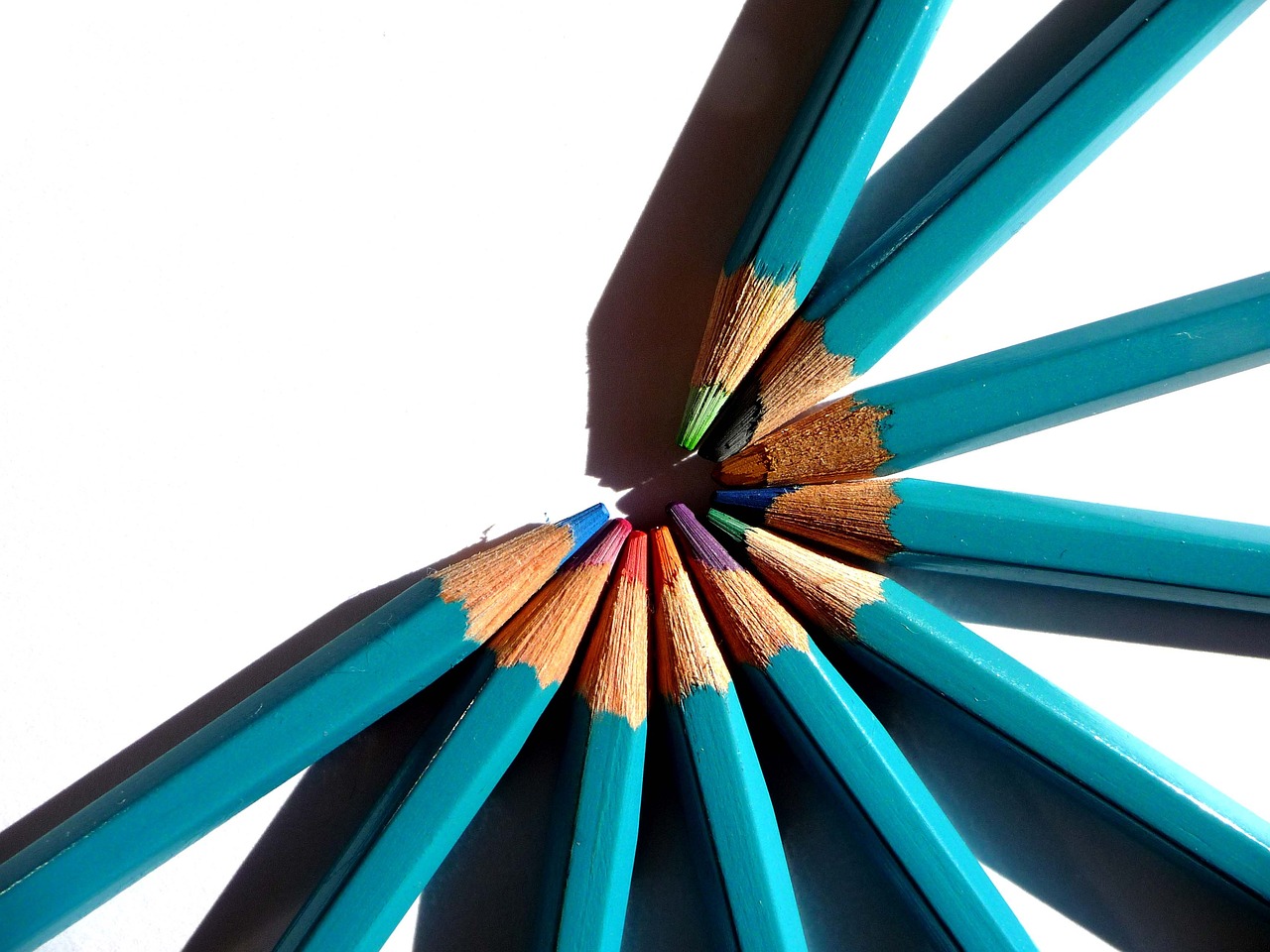
Local Value
When we talk about , we're diving deep into the essence of what makes an object visually unique. Local value refers to the inherent lightness or darkness of an object, and it exists independently of the lighting conditions surrounding it. Think of it as the object's personality shining through, regardless of whether it’s basking in sunlight or cloaked in shadow. This concept is crucial for artists because it lays the foundation for creating realistic and compelling compositions. By understanding local value, artists can establish a baseline that informs their entire piece, allowing them to manipulate other aspects like color and texture effectively.
Defining local value is an art in itself. It involves a keen analysis of an object's color and texture, which helps artists create representations that resonate with viewers. For instance, consider a ripe banana. Its local value is a bright yellow, but depending on the light, it can appear lighter or darker. By focusing on this intrinsic quality, artists can portray the banana in a way that feels true to life, even if they choose to depict it in an unconventional setting. This understanding allows them to paint or draw with a sense of authenticity that captivates the audience.
To illustrate the importance of local value, let’s look at some examples. In still life studies, artists often depict objects under consistent lighting conditions to emphasize their true colors. Imagine a simple setup with a green apple, a glass of water, and a brown wooden table. Each object's local value plays a vital role in how they interact with one another visually:
| Object | Local Value | Effect on Composition |
|---|---|---|
| Green Apple | Medium Green | Brings freshness and vibrancy |
| Glass of Water | Clear (Light Blue) | Creates transparency and reflection |
| Brown Wooden Table | Dark Brown | Grounds the composition and adds warmth |
In this example, the local values of each object contribute to the overall harmony of the composition. The vibrant green of the apple contrasts beautifully with the dark brown of the table, while the clear glass adds a touch of elegance. This interplay of values not only defines each object but also enhances the depth and dimensionality of the entire piece.
Understanding local value is like having a secret weapon in your artistic arsenal. It empowers artists to convey emotion, set the mood, and guide the viewer's eye throughout their work. So, the next time you pick up a brush or pencil, take a moment to consider the local values of the objects you're depicting. You might be surprised at how much this simple concept can elevate your art!
- What is local value in art? Local value refers to the inherent lightness or darkness of an object, independent of lighting conditions.
- Why is local value important? It helps artists create realistic representations and establish a baseline for their compositions.
- Can local value change with lighting? No, local value remains constant regardless of the lighting conditions.

Defining Local Value
This article delves into the concept of values in visual arts, examining how they influence depth, contrast, and overall composition in drawing and painting techniques.
Understanding value is crucial for artists as it defines the lightness or darkness of colors, impacting the mood and perception of artwork significantly.
Values can be categorized into various types, such as local value, perceptual value, and tonal value, each playing a vital role in creating depth and dimension.
Local value refers to the inherent lightness or darkness of an object, independent of lighting conditions, allowing artists to establish a baseline for their compositions.
Defining local value involves a thoughtful analysis of an object's color and texture. It is akin to peeling back the layers of an onion; by understanding the intrinsic qualities of the subject, artists can create more realistic representations in their drawings and paintings. When an artist identifies the local value, they are essentially determining how light or dark the object appears in its natural state, without the influence of shadows or highlights. This process can be broken down into several key components:
- Color Analysis: Artists must examine the color of the object itself, which serves as the foundation for determining its local value. For instance, a ripe banana has a distinct yellow hue that contributes to its local value.
- Texture Consideration: The texture of the object can also influence its perceived value. A smooth, shiny surface will reflect light differently than a rough, matte surface, creating variations in local value.
- Contextual Awareness: Understanding the surrounding environment is essential. An object may appear darker or lighter depending on what it is placed next to, so artists must be aware of contextual values.
By mastering the definition of local value, artists can effectively communicate the essence of their subjects, enhancing the realism and emotional impact of their art.
Examples of local value can be found in still life studies where artists depict objects under consistent lighting to emphasize their true colors. For example, a still life arrangement featuring a green apple, a red tomato, and a yellow lemon can showcase local values distinctly when the light source remains unchanged. The artist can focus on the inherent qualities of each fruit, allowing their unique colors and textures to shine through without the distraction of fluctuating lighting conditions.
Perceptual value relates to how we perceive an object's color and brightness under varying lighting conditions, influencing the overall atmosphere of a piece.
Contrast is essential in art as it highlights differences in value, drawing attention to focal points and enhancing the visual interest of the artwork.
High contrast techniques involve using stark differences between light and dark values to create dramatic effects and emphasize certain elements within the composition.
Low contrast techniques utilize subtle shifts in value, resulting in a softer appearance that can evoke calmness and harmony in the artwork.
Q: What is the difference between local value and perceptual value?
A: Local value refers to the inherent lightness or darkness of an object in a neutral light, while perceptual value considers how we perceive that object under varying lighting conditions.
Q: Why is understanding value important for artists?
A: Understanding value is crucial because it affects the mood, depth, and overall composition of an artwork, allowing artists to convey emotions and realism effectively.
Q: Can you give an example of how to use local value in painting?
A: Sure! When painting a still life, focus on the true colors of each object without adding shadows or highlights. This approach helps establish a strong foundation for the painting.
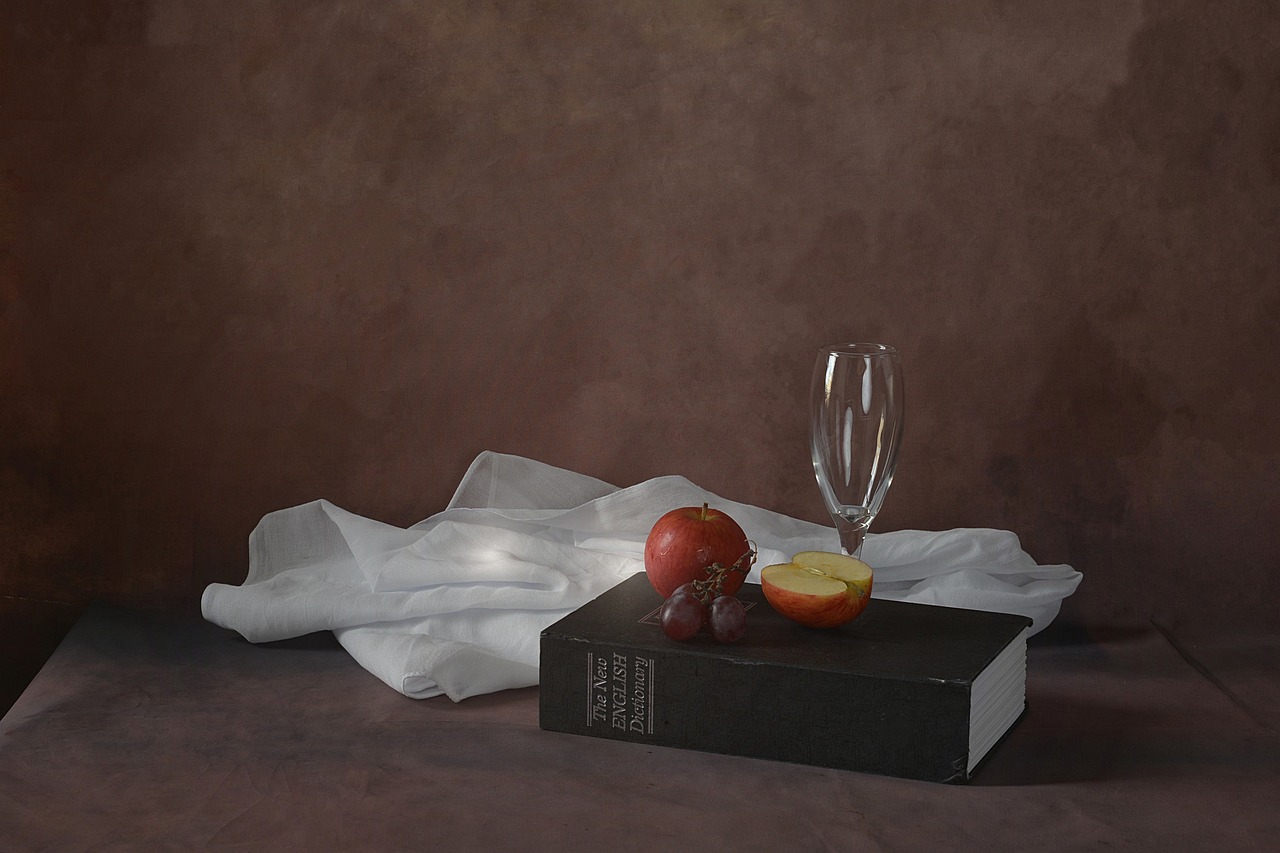
Examples of Local Value
When we think about local value, it's essential to recognize how it plays a pivotal role in the world of visual arts. Local value is the inherent lightness or darkness of an object, independent of the surrounding light conditions. This concept becomes particularly vivid when we examine still life studies, where artists meticulously depict objects under consistent lighting. Imagine a bowl of fruit: the banana, with its vibrant yellow hue, has a distinct local value that remains relatively unchanged regardless of how the light hits it. It’s this consistency that helps artists establish a baseline for their compositions.
Let’s take a closer look at some classic examples of local value in action:
- Still Life with Apples: An artist might set up a still life featuring red apples on a white tablecloth. The local value of the apples will allow them to maintain their rich color, even as shadows play across the surface.
- Portraits: In portrait painting, the artist pays close attention to the local value of skin tones. For instance, the cheek might have a different local value than the forehead, yet both contribute to the overall realism of the face.
- Landscape Paintings: Consider a landscape where a green tree stands against a blue sky. The local value of the tree’s foliage will help it maintain its identity amidst varying light conditions, allowing the viewer to appreciate its form and depth.
These examples illustrate how local value acts as a foundation for creating depth and dimension in artwork. By focusing on the inherent qualities of objects, artists can craft pieces that resonate with viewers on a deeper level. Moreover, local value enables artists to communicate mood and emotion effectively, guiding the viewer’s eye through the composition. Just as a writer carefully selects words to evoke feelings, an artist chooses values to shape the viewer's experience.
In summary, local value serves as a critical element in the artist's toolkit, allowing for realistic representations and enhancing the overall narrative of the artwork. Whether it’s the vibrant colors of a still life or the subtle tones of a portrait, understanding local value is key to mastering the art of drawing and painting.
What is local value in art?
Local value refers to the inherent lightness or darkness of an object, independent of lighting conditions. It helps artists establish a baseline for their compositions.
How does local value affect a painting?
Local value impacts the mood and perception of a painting by defining how colors are represented, contributing to the overall depth and realism of the artwork.
Can local value change under different lighting conditions?
No, local value remains constant regardless of lighting; however, the perceived value of an object may change depending on the surrounding light.
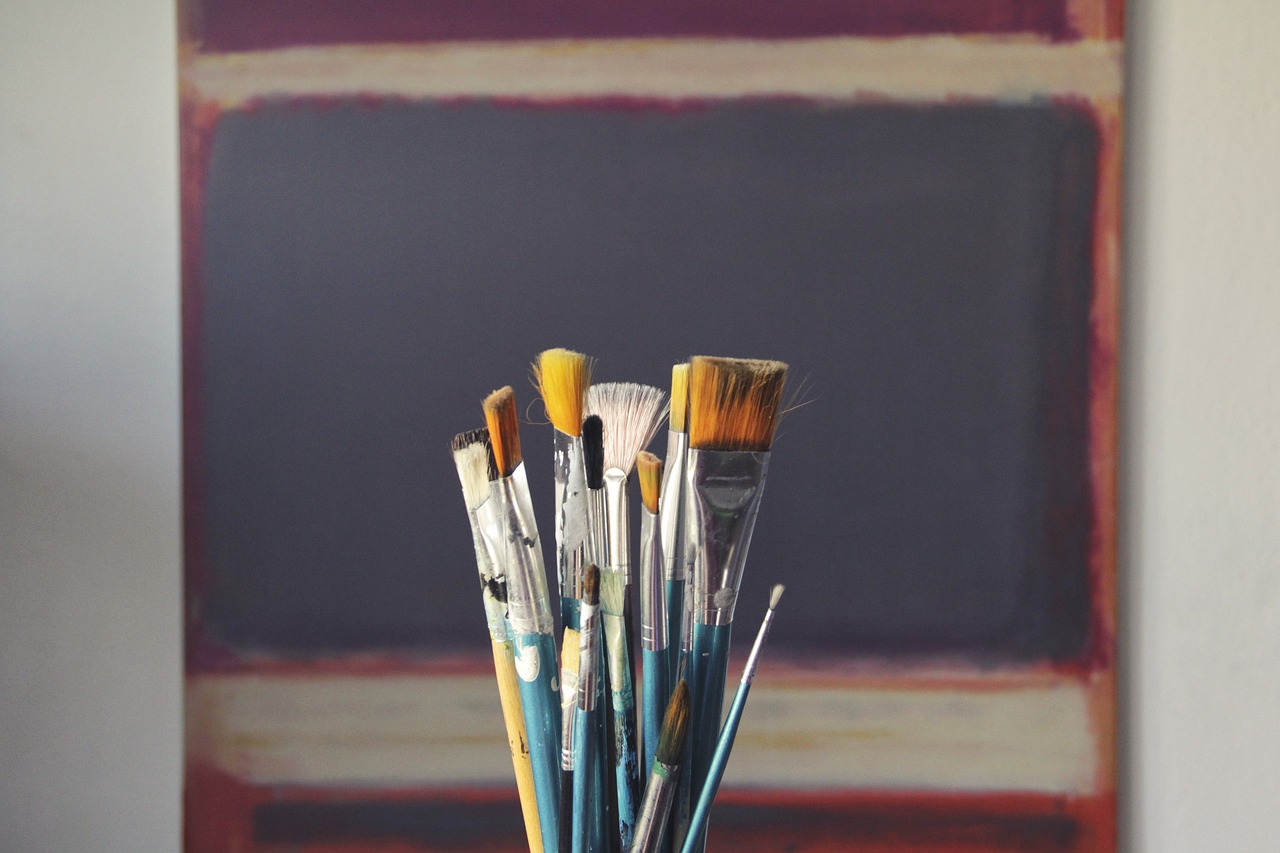
Perceptual Value
When we talk about , we're diving into the fascinating realm of how we perceive colors and brightness based on the lighting conditions surrounding an object. It's like putting on a pair of magic glasses that change the way we see the world! Imagine walking through a forest at dusk; the greens of the leaves might appear darker, while the fading sunlight gives them a warm glow. This phenomenon is crucial for artists, as it allows them to create artworks that resonate with viewers on a deeper level.
Perceptual value is not merely about the inherent qualities of an object; it’s about how those qualities interact with light and shadow. For instance, a bright red apple can look entirely different when placed under a soft, diffused light compared to a harsh, direct light. In the former, the apple may appear more vibrant and inviting, while in the latter, it might seem stark and overly saturated. This dynamic interplay is what artists must master to evoke the right emotions and atmospheres in their works.
To grasp perceptual value fully, artists often engage in studies that involve observing objects under various lighting conditions. This practice not only sharpens their skills but also enhances their understanding of how light affects color perception. Here are some key aspects that artists consider:
- Light Source: The direction, intensity, and color of the light can dramatically alter how we perceive an object's value.
- Surrounding Colors: The colors surrounding an object can influence our perception of its value. For example, a gray object placed against a white background may appear darker than the same object against a black background.
- Atmospheric Effects: Factors like fog, humidity, or even time of day can change how we see color and value, adding another layer of complexity to perception.
Understanding perceptual value is vital for artists aiming to create depth and emotion in their artwork. By manipulating the perception of value, they can guide the viewer's eye, create focal points, and even evoke specific feelings. For example, a painting with a warm, glowing light can evoke feelings of comfort and nostalgia, while a stark, high-contrast piece may convey tension or drama.
Ultimately, mastering perceptual value is like learning to dance with light. It’s about understanding the rhythm of shadows and highlights and how they can be used to create a visual symphony that captivates the audience. So, the next time you pick up a brush or pencil, remember: it’s not just about the colors you choose, but how you make them sing through the values you create!
Q: What is the difference between local value and perceptual value?
A: Local value refers to the inherent lightness or darkness of an object, regardless of lighting conditions, while perceptual value considers how lighting affects our perception of that object's color and brightness.
Q: How can I practice understanding perceptual value?
A: You can practice by setting up still life compositions under different lighting conditions and observing how the light changes the appearance of colors and values.
Q: Why is perceptual value important in art?
A: Perceptual value helps artists create depth, mood, and emotional resonance in their work, making it more engaging for viewers.

Creating Contrast
Contrast is a fundamental element in the world of art, and it serves as a powerful tool for artists to convey emotions and draw viewers into their compositions. By manipulating the differences between light and dark values, artists can create a sense of depth, highlight focal points, and evoke a range of feelings in their audience. Imagine walking through a gallery and being immediately captivated by a painting where the bright, sunlit areas leap out at you against a backdrop of deep shadows. This is the magic of contrast at play!
When we talk about contrast in art, we're not just referring to a simple play of black and white; it's much more nuanced. There are two primary techniques that artists employ to create contrast: high contrast and low contrast. Each technique has its own unique impact on the viewer's experience and can dramatically change the overall mood of a piece.
High contrast techniques are all about making bold statements. By using stark differences between light and dark values, artists can create dramatic effects that command attention. Think of a classic chiaroscuro painting, where the interplay of light and shadow creates a striking three-dimensionality. In these works, the bright highlights can almost feel like they are jumping off the canvas, while the deep shadows pull the viewer's gaze into the depths of the painting.
Some common characteristics of high contrast techniques include:
- Dynamic Lighting: Using strong directional light to create pronounced shadows.
- Emphasis on Focal Points: Drawing attention to specific areas of the artwork by surrounding them with contrasting values.
- Emotional Impact: Evoking feelings of tension, drama, or excitement through the use of light and shadow.
On the flip side, low contrast techniques offer a softer, more harmonious approach. By utilizing subtle shifts in value, artists can create a serene atmosphere that invites contemplation. This technique is often employed in landscapes or portraits where the goal is to evoke a sense of calmness and tranquility. Imagine a misty morning where the colors blend seamlessly into one another, creating a soft, dreamlike quality.
Low contrast works well in situations where the artist wants to convey:
- Harmony: Creating a sense of balance and unity in the composition.
- Subtlety: Allowing the viewer to explore the artwork without overwhelming them with stark differences.
- Atmosphere: Setting a mood that is gentle and inviting, often found in impressionistic works.
In conclusion, whether an artist chooses to embrace high contrast techniques for their dramatic flair or low contrast techniques for their soothing qualities, understanding how to manipulate values is essential for creating compelling artwork. Contrast not only enhances the visual interest but also enriches the narrative of the piece, allowing artists to communicate their ideas and emotions effectively. So, the next time you pick up a brush or pencil, think about how you can use contrast to breathe life into your art!
Q1: What is the difference between high contrast and low contrast in art?
A1: High contrast involves using stark differences between light and dark values to create dramatic effects, while low contrast utilizes subtle shifts in value for a softer, more harmonious appearance.
Q2: How can I practice creating contrast in my artwork?
A2: Start by experimenting with different lighting conditions in your still life setups. Try painting the same object under various lighting to see how the values change and affect the overall mood.
Q3: Why is contrast important in visual arts?
A3: Contrast is crucial because it helps to establish focal points, create depth, and enhance the emotional impact of a piece, making it more engaging for the viewer.
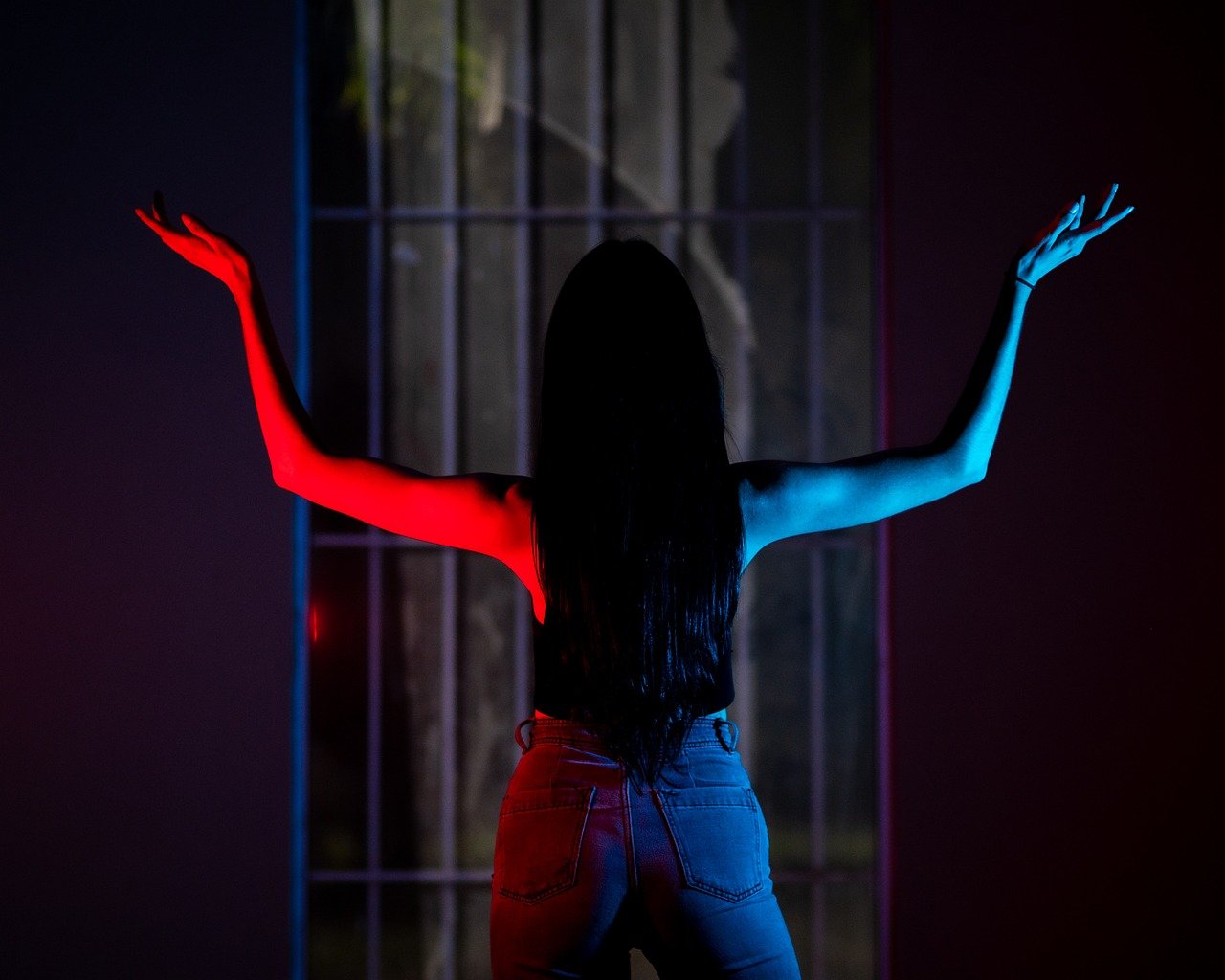
High Contrast Techniques
When it comes to creating a stunning visual impact in your artwork, are your best friends. These methods leverage the dramatic interplay between light and dark values, producing eye-catching effects that can captivate viewers. Imagine walking into a gallery and being immediately drawn to a painting where the bright whites seem to leap off the canvas against deep, shadowy blacks. This is the power of high contrast!
To effectively utilize high contrast in your artwork, consider the following strategies:
- Choose a Limited Palette: Using a restricted color palette can amplify the differences in value. By focusing on a few colors and emphasizing their lightness or darkness, you create a striking visual experience.
- Employ Strong Lighting: When setting up your still life or portrait, think about how light interacts with your subjects. A strong light source can cast deep shadows and create highlights that enhance the contrast.
- Layering Techniques: In painting, layering colors can help achieve a sense of depth. By applying lighter colors over darker ones or vice versa, you can create a dynamic range of values that draws the eye.
High contrast techniques are not just about making things look pretty; they can also convey powerful emotions and narratives. For instance, a painting that features stark contrasts can evoke feelings of tension and drama, while softer contrasts may suggest tranquility and peace. Think of it like the difference between a thunderstorm and a gentle breeze—both are beautiful in their own way, but they elicit different responses.
One classic example of high contrast can be seen in the works of Caravaggio, who masterfully used light and shadow (a technique known as chiaroscuro) to create depth and drama in his paintings. His ability to manipulate values not only guided the viewer's eye but also heightened the emotional resonance of his subjects. As you explore high contrast techniques, consider how you can tell your own story through the values in your work.
In summary, high contrast techniques can transform your artwork from ordinary to extraordinary. By consciously choosing how you manipulate light and dark values, you can create compositions that not only attract attention but also convey complex emotions and narratives. So, grab your brushes and start experimenting with these techniques—who knows what stunning pieces you might create!
Q: What is the best way to practice high contrast techniques?
A: Start by creating simple still life setups with strong light sources. Experiment with different angles and observe how shadows and highlights interact with your objects. This will give you a hands-on understanding of how values work together.
Q: Can high contrast be used in digital art?
A: Absolutely! Digital artists can easily manipulate values using software tools. Play around with contrast settings and layer blending modes to achieve the desired effect in your digital paintings.
Q: Are there any famous artists known for their use of high contrast?
A: Yes, artists like Rembrandt and Francisco Goya are renowned for their use of high contrast in their works, creating dramatic effects that have stood the test of time.
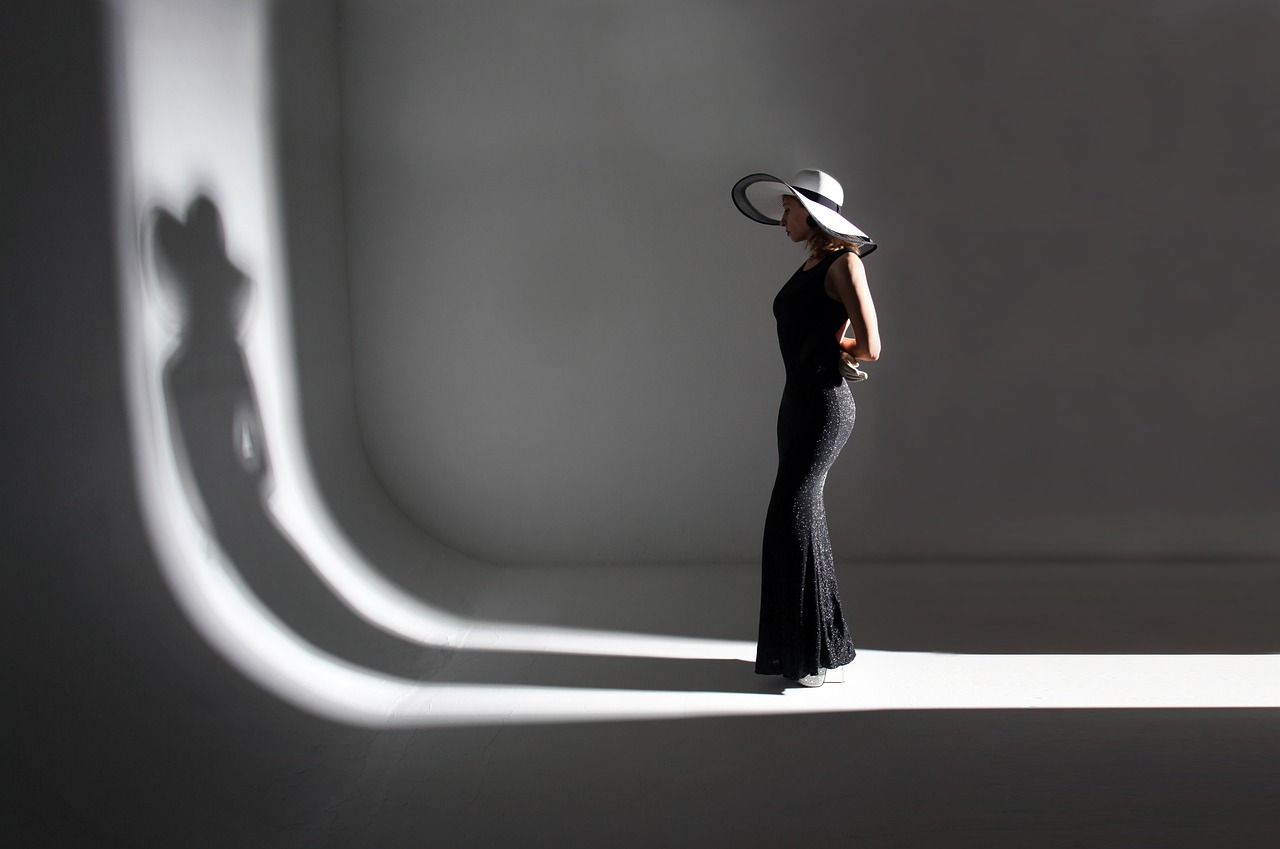
Low Contrast Techniques
When it comes to creating a soothing and inviting atmosphere in art, are the way to go. These methods focus on subtle shifts in value, allowing artists to blend colors and tones in a way that feels harmonious and gentle. Imagine walking through a misty forest where the colors are muted and soft; that’s the essence of low contrast. Instead of jarring transitions between light and dark, this technique embraces a more gradual approach, which can evoke feelings of calmness and serenity.
One of the key aspects of low contrast techniques is the use of a limited color palette. By choosing colors that are close in value, artists can create a sense of unity and cohesion in their work. For instance, if you’re painting a landscape at dusk, using shades of blue, gray, and soft lavender can help capture the tranquility of the moment without overwhelming the viewer with stark contrasts. This approach not only enhances the visual experience but also allows the viewer to linger on the details, inviting them to explore the piece more deeply.
In addition to color choice, texture plays a significant role in low contrast techniques. By incorporating various textures, artists can add depth and interest without relying on high contrast. For example, using a soft brushstroke can create a smooth gradient that transitions seamlessly from one value to another. This technique can be particularly effective in portrait painting, where the subtle variations in skin tone can convey emotion and character without the need for harsh shadows.
To further illustrate the effectiveness of low contrast techniques, consider the following table that outlines key characteristics:
| Characteristic | Description |
|---|---|
| Color Palette | Utilizes colors that are close in value for a unified look. |
| Texture | Incorporates various textures to enhance depth without high contrast. |
| Emotion | Evokes feelings of calmness and serenity. |
| Visual Interest | Encourages viewers to explore details more thoroughly. |
Ultimately, low contrast techniques are about creating a mood and inviting the viewer into a world that feels both familiar and comforting. By mastering these techniques, artists can develop a unique style that resonates with their audience, allowing for a deeper connection with their work. So, the next time you pick up your brush, consider how low contrast can transform your piece into a serene masterpiece that speaks volumes without shouting.
- What is low contrast in art? Low contrast refers to the subtle difference between light and dark values in a piece, creating a softer and more harmonious appearance.
- How can I achieve low contrast in my artwork? You can achieve low contrast by using a limited color palette, blending colors smoothly, and focusing on textures that enhance depth.
- When should I use low contrast techniques? Low contrast techniques are ideal for creating serene and calming artworks, such as landscapes or portraits that require a gentle touch.
- What are some benefits of using low contrast? Low contrast can evoke emotions, encourage viewers to explore details, and create a cohesive look in your artwork.
Frequently Asked Questions
- What is the significance of value in drawing and painting?
Value is essential in visual arts as it defines the lightness or darkness of colors. It influences the mood, depth, and perception of artwork, helping artists convey emotions and create a sense of realism.
- Can you explain the different types of value?
Absolutely! There are several types of value, including local value, perceptual value, and tonal value. Each type contributes uniquely to the overall composition, with local value focusing on an object's inherent color, perceptual value considering how lighting affects our perception, and tonal value dealing with the range of light and dark in a piece.
- How do local values affect an artwork?
Local values help establish a baseline for an artwork by representing the true colors of objects, independent of lighting conditions. This allows artists to create more realistic representations, as seen in still life studies where consistent lighting highlights an object's true local value.
- What is the difference between high contrast and low contrast techniques?
High contrast techniques use stark differences between light and dark values to create dramatic effects, drawing attention to specific elements. In contrast, low contrast techniques involve subtle shifts in value, resulting in a softer appearance that evokes calmness and harmony.
- How can I practice understanding value in my own artwork?
A great way to practice is by doing value studies. Try creating sketches or paintings that focus solely on the values rather than colors. Use a limited palette or even grayscale to train your eye to see the differences in light and dark, helping you improve your overall composition skills.
- What role does perceptual value play in an artwork?
Perceptual value is crucial because it relates to how we perceive an object's color and brightness under different lighting conditions. This understanding helps artists create a more immersive experience, as the atmosphere of a piece can change dramatically based on how values are manipulated.



















